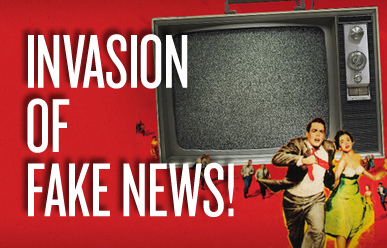
In our very first post, founding editors Nathan Jurgenson and PJ Patella-Rey wrote:
Facebook has become the homepage of today’s cyborg. For its many users, the Facebook profile becomes intimately entangled with existence itself. We document our thoughts and opinions in status updates and our bodies in photographs. Our likes, dislikes, friends, and activities come to form a granular picture—an image never wholly complete or accurate—but always an artifact that wraps the message of who we are up with the technological medium of the digital profile.
Too few people were talking about the internet in this way in 2010. Many were still paying close attention to Second Life more because it comported with prevailing theories of how identity worked online, not because it was representative of most people’s identity online. It was a different time: no one paid for music on the internet, men were afraid to walk out of the house with their new iPads, there was talk of Twitter Revolutions, Occupy gave us tons of opportunities to think about embodiment, planking was a thing, tattoos were talking to Nintendo 3DS’s, and the conversations around digital privacy that we have today were just taking their present form. The persistent media-rich profiles we made just a few years ago had lost their novelty and now we had to reckon with the context collapses, too-clean quantifications, algorithmic segregations, and liquid identities that they afforded.
Much has changed in the handful of years since Nathan and PJ started the blog. We say “cyborg” less and there are tons of new, wonderful people writing thoughtful essays and commentary about everything that is exciting, provocative, and downright frightening about our augmented society.
As always it is a pleasure to work alongside my co-editor Jenny and we couldn’t ask for a better crew of regular contributors: Crystal, Maya, Stephen, Gabi, Marley, Britney, and Sarah. And, of course, this site would be a 404 if it weren’t for Nathan and PJ. To all of you and our guest contributors, Thank You!
It is hubris to predict the future but anniversaries are as good a time to look forward as they are to look back so here are a few topics and trends that seem worthy of research, debate, and clear-eyed thinking in the next year:
Geographic Thinking Will Take Prominence Alongside Historic, Anthropological, and Sociological Analysis
I study cities so maybe I am biased here but as more and more of our online interactions happen through our devices, instead of less-portable computers, geographic context will become a key component of social media’s affordances and thus our analyses of the social action that takes place on those services. Pair Snapchat’s recent map features with the steady increase of ride-sharing services and the continual fascination with the possibilities that drones represent, and it makes sense that geographers will be more helpful in understanding our digital age than ever before. We’re over-due for it anyway. As the recently-departed Edward Soja once said in his Postmodern Geographies: “For the past century, time and history have occupied a privileged position in the practical and theoretical consciousness of Western Marxism and critical social science. … Today, however, it may be space more than time that hides consequences from us, the ‘making of geography’ more than the ‘making of history’ that provides the most revealing tactical and theoretical world.” Dromology (Paul Virilio’s term for the study of speed) also has a role to play here. As we seek out and interact with our friends across digital maps and subscribe to on-demand product delivery, the accounting and over-coming of large amounts of terrain and topology become an issue for individuals, not just nations’ armies.
The Return of InfoGlut
In 2013 Mark Andrejevic published Infoglut: How Too Much Information Is Changing the Way We Think and Know and that titular neologism was everywhere. Something similar is sorely needed again as “fake news” and its phenomenological antecedents pop up like mushrooms in the dark, damp swamp that is slowly engulfing our media landscape. The issue of too many people acting on and responding to information with questionable relationships to reality is serious, but framed badly. Yes there is too much misleading information out there but what is worse is that there is simply too much information being routed through algorithms that will mess up as surely as their human progenitors do. Perhaps we don’t need better information, just less.
Amazon is the New Facebook When It Comes to Privacy Norms
The recent headlines about Amazon Key, the service that lets couriers open your front door, are definitely having an outsized influence on my thoughts but I still think its accurate to say that Amazon —in its attempts to find and conquer new markets— will start playing with our privacy norms. This year alone it has released a slew of “echo” branded devices that judge your outfits and let people automatically turn on video chats to say nothing of their Alexa devices that are constantly listening. Amazon has every reason to feel like they can succeed where Facebook failed: while Facebook was pushing users to reveal more just as they were starting to share less, Amazon has actual products and services that it is offering consumers.
Acceptance and Mobilization Around Social Media Companies’ Authority
In 2014 Yo, Ello, and Emojli tried to shake us out of the social media duopoly of Twitter and Facebook, but fell short of establishing a beachhead. Let this next year be the time that we finish our grieving process and accept these imperfect companies as the major power-players for the foreseeable future. With this acceptance, should come a determination to build organizations that we feel comfortable living with. Instead of falling for the Silicon Valley myth that everything is a meritocracy and the next billion-dollar social media company is just one round of VC funding away, we must start doing the arduous work of reigning these companies in and learning to make demands of them. Not just regulation or transparency, but profit sharing and true, meaningful shared governance. If this doesn’t happen, we may stand to lose the cyborg selves we were just starting to understand.









